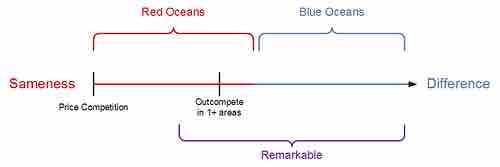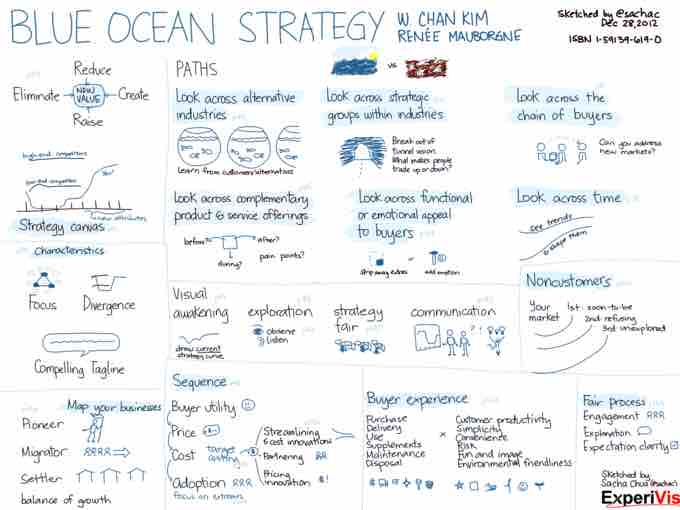The idea behind the blue ocean strategic perspective is that competing in a red ocean (an already established market place, likely with companies with economies of scale), is not a rational option for investment. Instead, companies need to go beyond competing. Identifying ways to create a new market, new niche or new differentiated strategy that creates more pie (as opposed to competing over an existing one) is a superior approach.
Red Ocean Drawbacks
To expand slightly on this point, the critical assumption here is a structural one: competition-based strategies require firms within an existing industry to compete within the confines of that marketplace. This requires the generation of competitive advantages over other incumbents, essentially understanding the competition and identifying ways to outdo them in some particular value-creating component of the operation. In this case, winning market share is a zero sum game, where the gains of one company are a direct loss of another. From a macroeconomic perspective this is of limited value, as wealth generation is only ever an unlikely byproduct of competition and redistribution (if it happens at all).
Blue Ocean Strategy
Blue ocean strategy originates from a book was written in 2005 of the same name by W. Chan Kim and Renée Mauborgne. It is based on the principle that strategic management could extend it's scope beyond competition. For context, illustrates the different models within the blue ocean framework. The central thesis is how to generate new value, and this is accomplished through one (or more) of four perspectives: eliminating, reducing, raising or creating. Simply put, create new efficiency or new innovative approaches (or both). The second figure illustrates this well, as the substantial value added lies in differentiating into new strategies to capture new market share as opposed to competing for established market share.

Red Ocean vs. Blue Ocean
The difference between the two concepts, where red is more conservative and cost-cutting and blue is creative and differentiating

Blue Ocean Strategy Graphic
An excellent overview of the components of blue ocean strategy, particularly highlighting the trajectory of differentiation
As the Blue Ocean perspective rests heavily on identifying new and innovative operations, it is imperative that a map is generated to outline what questions to ask, and which trajectories to consider in pursuing it. Six paths were identified:
- Look across alternative industries.
- Look across complimentary products/services.
- Look across strategic groups within an industry.
- Look across both functional and emotional appeal from the buyer's perspective.
- Look across the chain of buyers (vertically).
- Look across time.
Other considerations in generating new market share concern identifying non-consumers. Those who are not purchasing a product or service do not necessarily lack a need for it; it may be that the needs of that particular group(s) deviates from what is being offered. Finding a way to look across this (utilizing the 6 paths above) to identify and fill those unique needs is the way in which niche markets are created.
Criticism
Criticism in academia exists for the blue ocean perspective, generally observing that despite the theoretical attractiveness there are few success stories who actually us the blue ocean strategy. It was also noted by some critics that there was a lack of control group in the publication, and that the theory itself is inherently unfalsifiable. It was observed that branding was omitted as a key success factor, as is utilizing successful communicative strategies.
Regardless of these criticisms, it is still highly influential and clearly defines a perspective which resonates well with the strategic framework as it currently stands in business. The red ocean/blue ocean analogy itself is demonstrating significant staying power, and the observation that differentiation towards innovative business models (not strictly innovative products) is an important objective for future strategists.